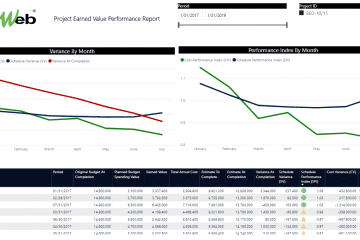For capital projects’ owners, having cost curves to monitor, evaluate and report the performance and status of those projects’ financial performance is of great importance. Mainly there will be three curves to manage assuming that the awarded contracts on those capital projects will be based on lump-sum contracts. In other words, there will be no cost variance for completing the agreed scope of work. The approved cost associated with the additional scope of work adjusts the project budget and commitment contracts. Accordingly, the monitored, evaluated, and reported on curves are the planned budget spending, actual cost or earned cost for completed and approved works, and the forecast cash flow for the balance work to complete.
Using a project management information system (PMIS) like PMWeb, capital project owners have a single platform to capture the details of all records needed to generate those curves as well as produce the needed reports and calculate the required measures. Using PMWeb ready-to-use modules for budget, budget adjustments, progress invoices, miscellaneous invoices, and forecasts achieves this.
Cost Breakdown Structure
The cost breakdown structure (CBS) must be aligned with the work breakdown structure (WBS) which will be used to progressively elaborate a project’s scope of work and schedule. Therefore, the cost plan must be structured around a progressive breakdown structure like the UniFormat™ numbering system that enables elaborating the cost plan as it evolves during the project life cycle stages.
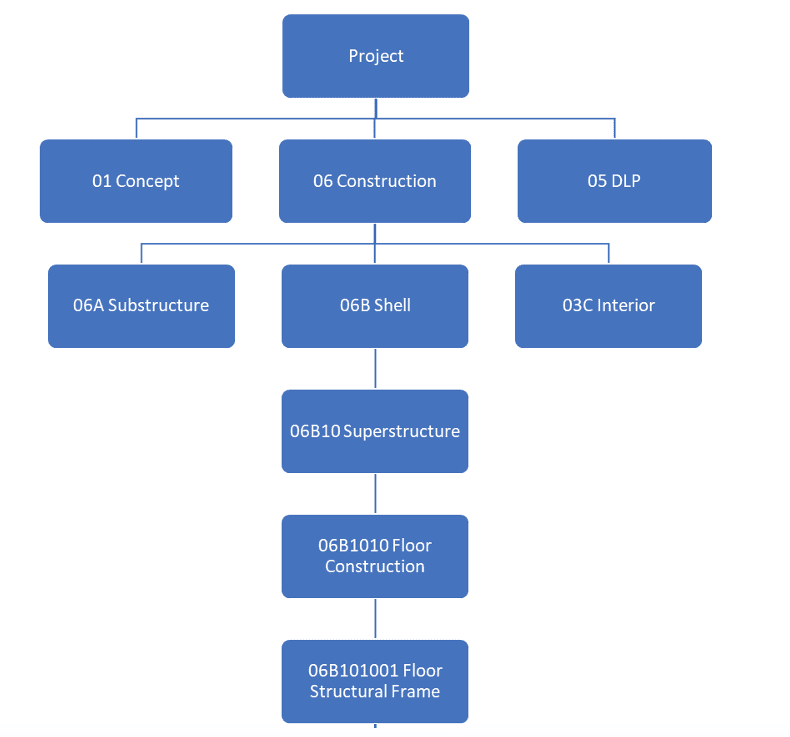
Accordingly, the cost breakdown structure will be created using the PMWeb cost accounts module. The CBS includes the four UniFormat™ levels. This enables the project management team to elaborate the project cost as the project’s scope of work gets better defined and detailed.
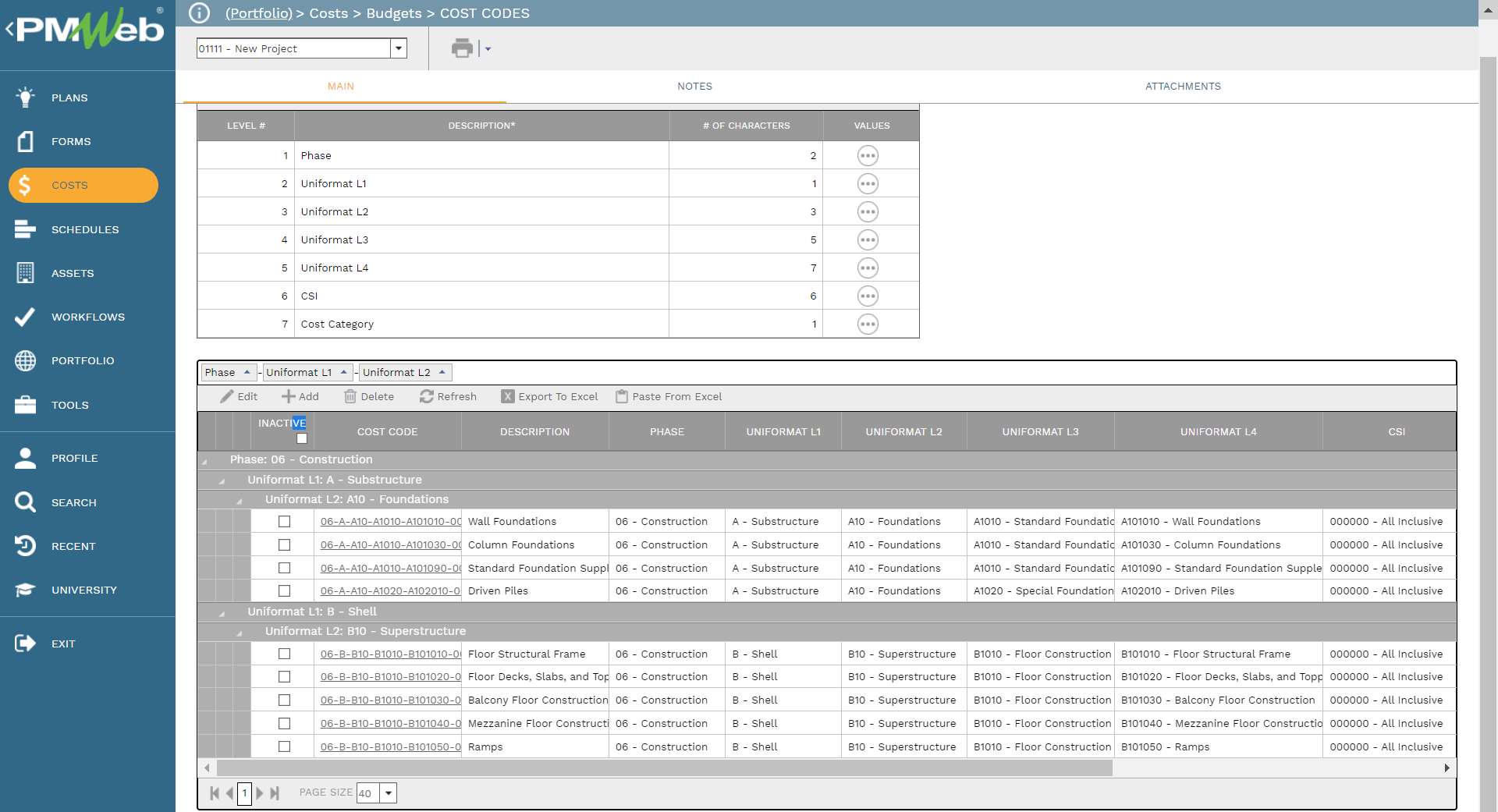
Budget and Planned Budget Spending Curve
The budget represents the investment that has been approved by the capital project owner for the project under review. The budget includes all direct and indirect project costs as well as the allowance for contingency reserve. PMWeb budget module captures the details of the approved budget as well as the planned spending plan for the project budget. PMWeb can maintain versions of all budgets created for the project but the final approved baseline budget should be based on the awarded commitment contract to ensure correct comparison as well as include the approved contingency amount. The planned budget spending plan reflects the advance payment, advance payment recovery, retention, and retention release which are related to the award contract or contracts.
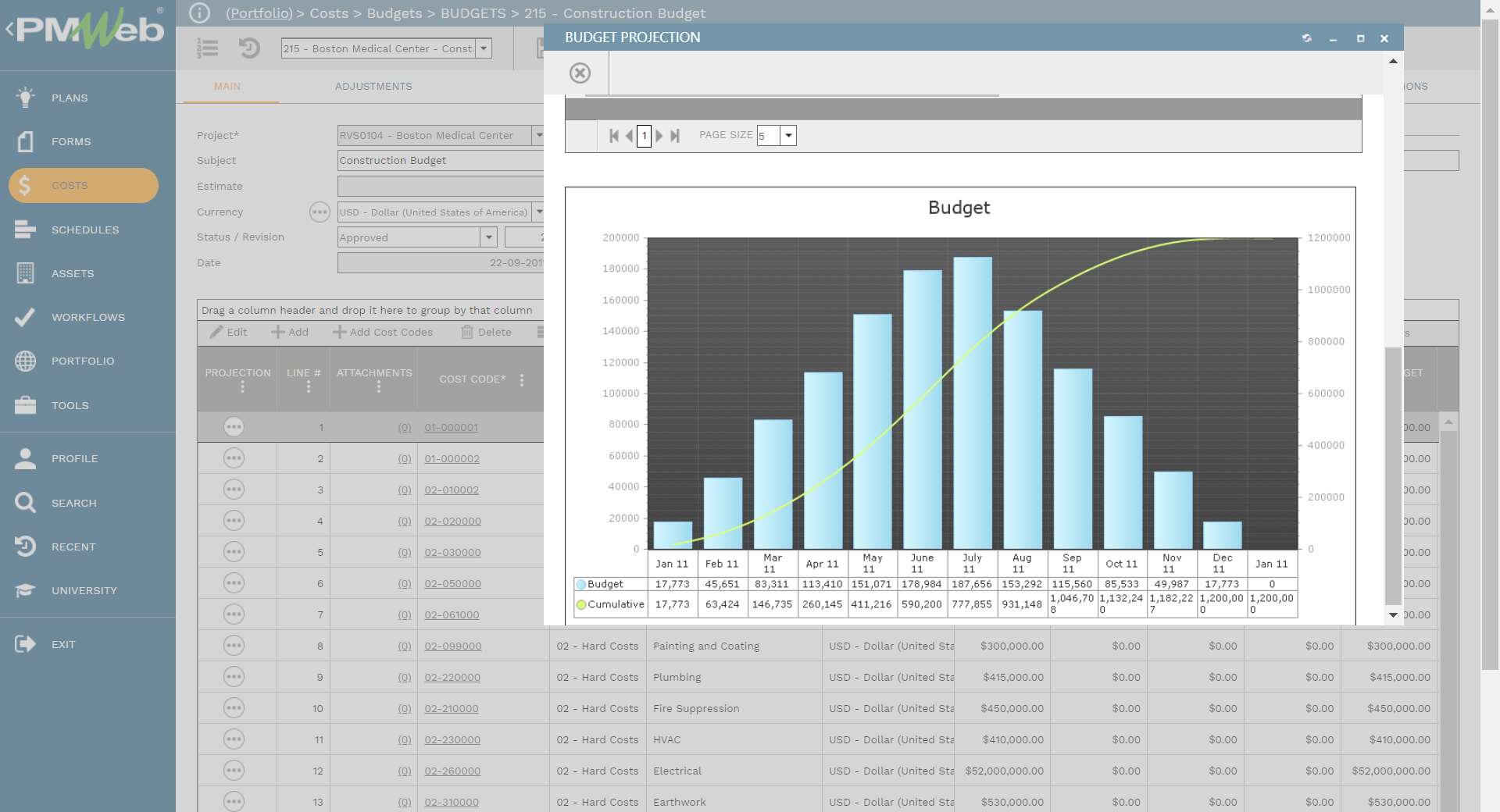
Adjusting the Baseline Budget
Any adjustments for the approved baseline budget are captured using the PMWeb budget request module. Those could include funds transfers from one cost center to another, for example transferring funds from contingency to concrete works, as well as any adjustments that could result in increasing or decreasing the project budget. All those adjustments need to be posted to the relevant project period to ensure that the budget spending plan reflects the latest status. Similar to all other PMWeb modules, assigning a workflow to the budget adjustment secures the needed reviews and approvals which incorporate the approval authority levels.
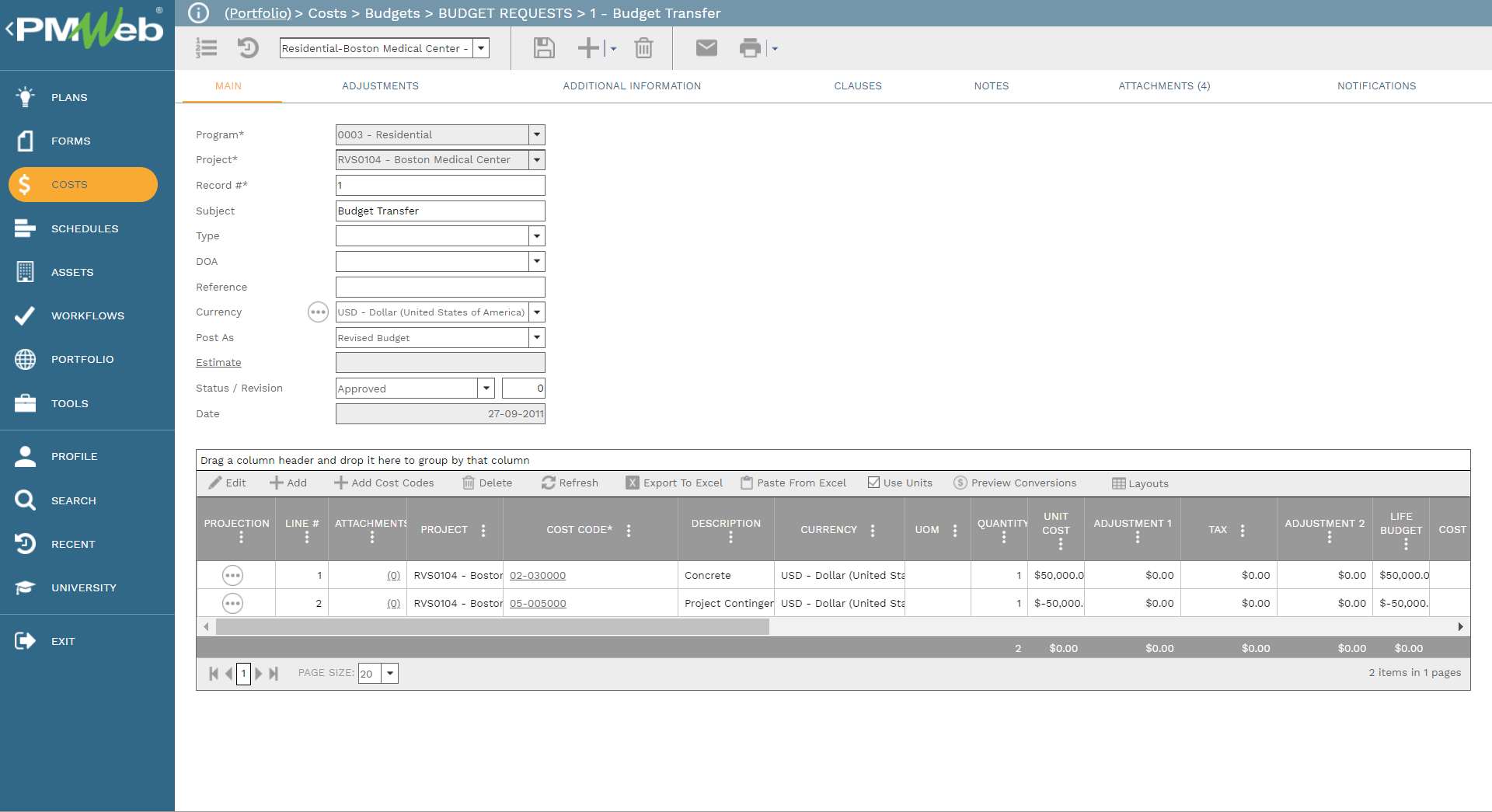
Awarding Commitments Against the Approved Project Budget
PMWeb commitment module allows creating a separate commitment for each commitment contract planned for the project as per the approved procurement strategy. The commitment module captures all potential change orders, change orders, progress invoices, and actual payment of approved progress invoices.
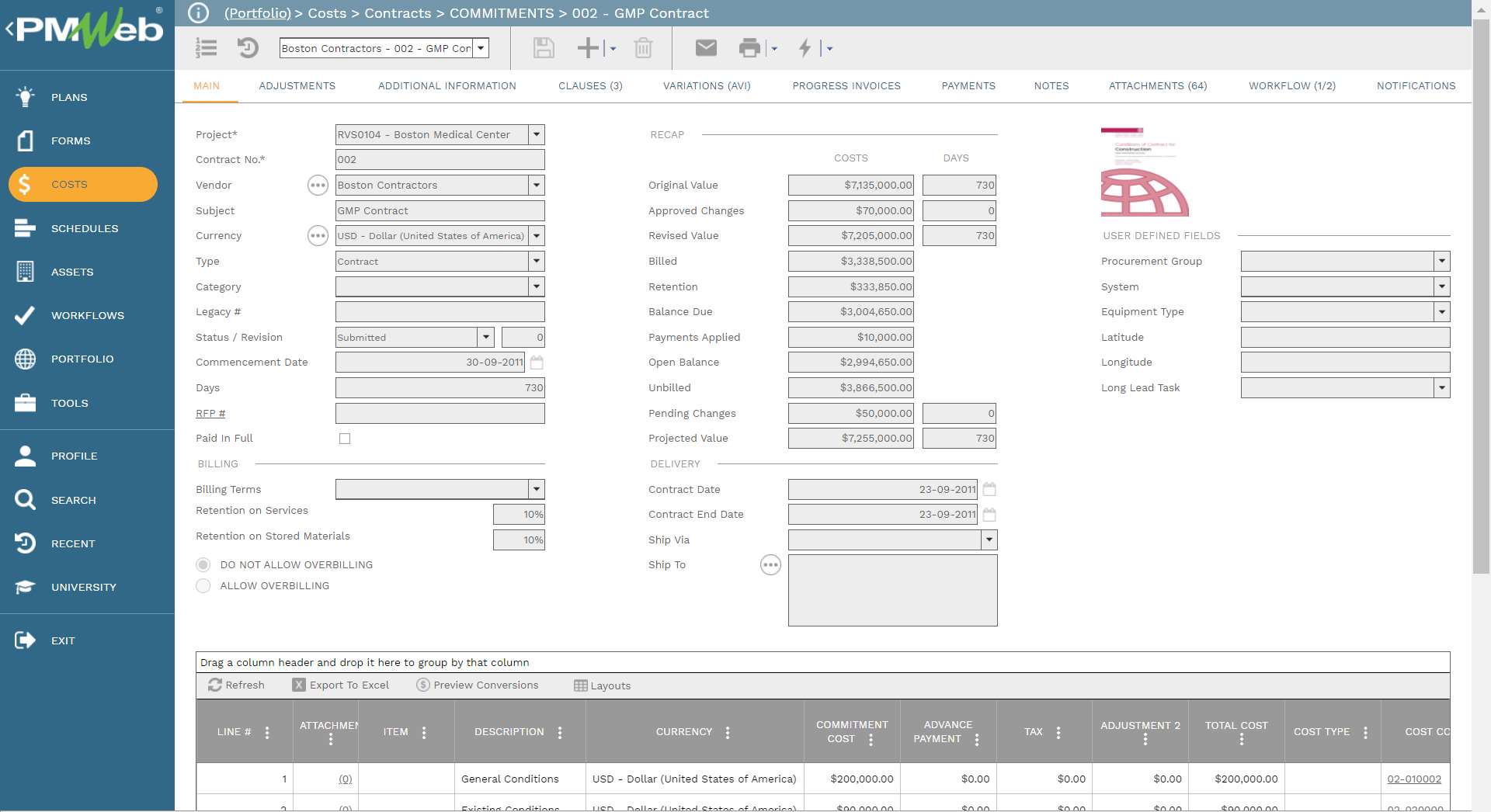
Managing Changes to Approved Commitments and Ensure Alignment with Budget Adjustments
PMWeb potential change order module allows all authorized project entities to submit change requests that they believe could have an impact on the awarded project commitment. The potential change order could be rejected or approved to become a change order for which it will be generated from the potential change order module.
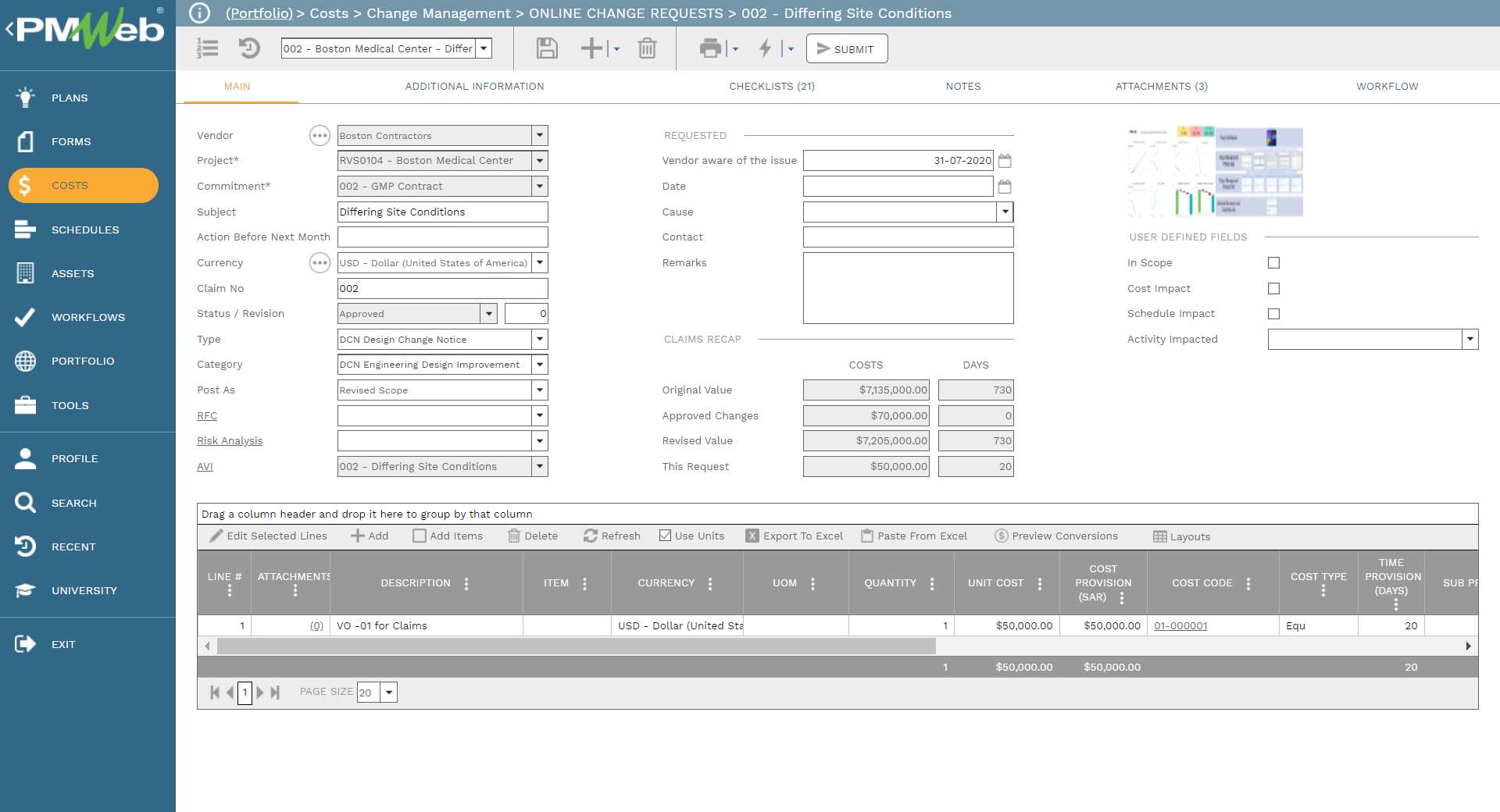
In addition, the PMWeb change order module captures all changes that could impact a commitment contract. The change orders post to their respective periods to ensure that the commitment cash flow is complete and correct. Similar to other PMWeb modules, supportive documents can be attached to the change order as well as a workflow can be assigned to ensure the required reviews and approval are carried out.
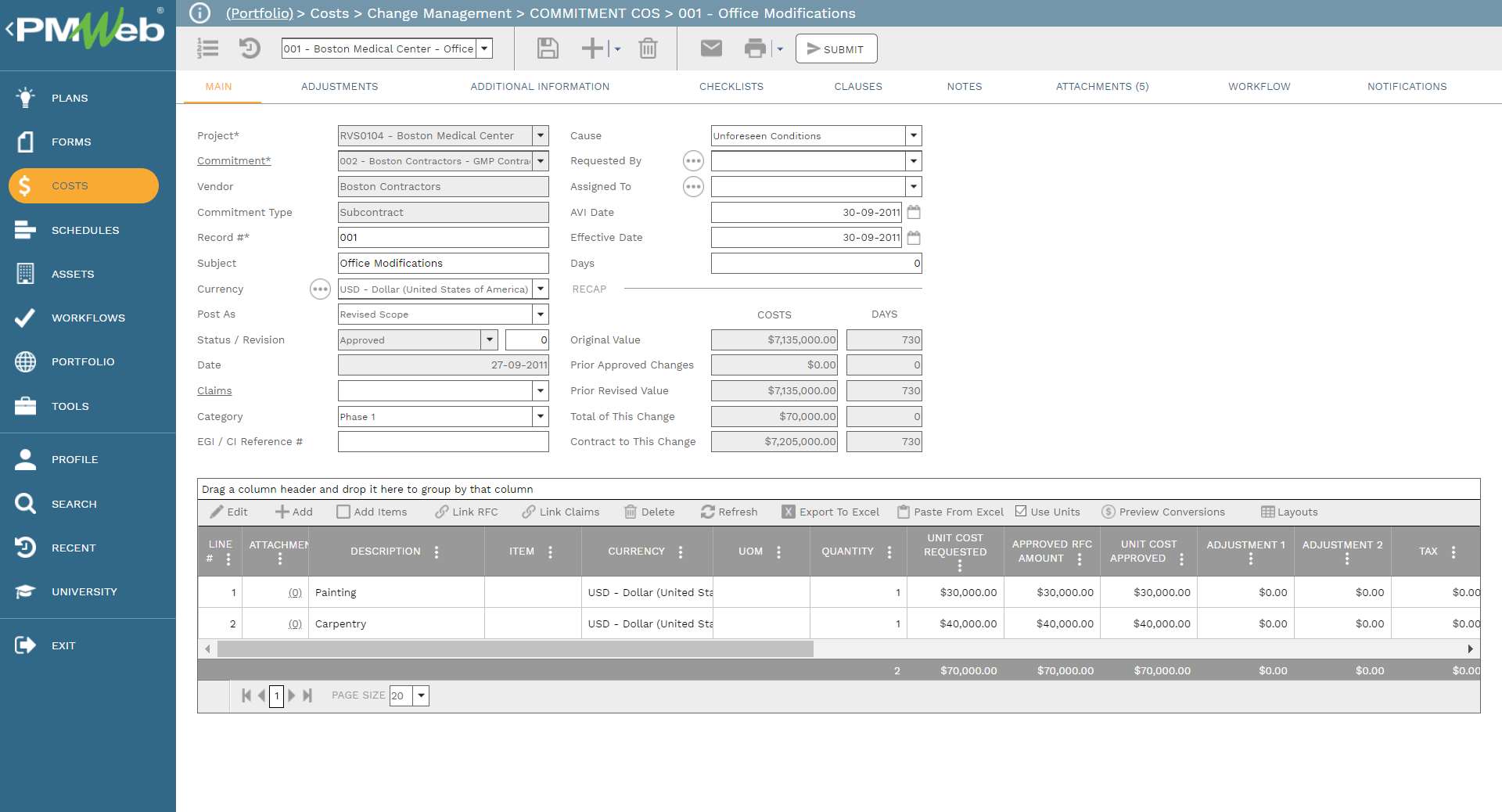
To ensure that there is proper alignment between approved change orders and budget adjustments, the PMWeb change event module will be used. This module lists the change orders that are related to each budget request that could have increased or even decreased the approved baseline budget.
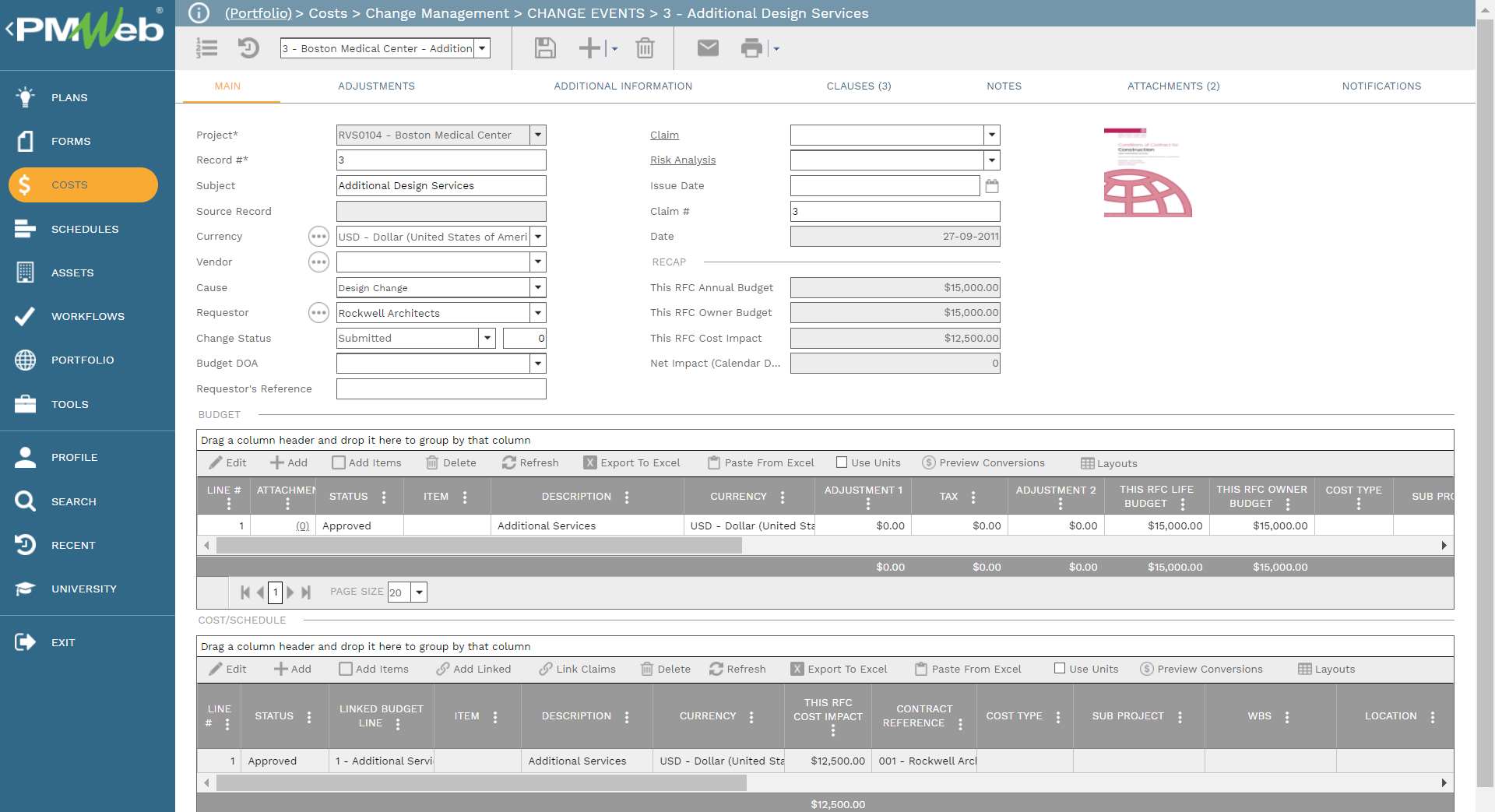
The Actual Cost Curve
The second curve will be the actual cost curve which is captured from the PMWeb Progress Invoice module which calculates the approved payment to be made to the contractors at end of each period. The actual cost reflects the advance payment, payment recovery, retention, and retention release values when they are paid. The progress invoice also includes payments made against approved change orders.

In addition, the actual cost incurred by the project could be from non-commitment invoices. Those could include management expenses, purchase of land, and fees associated with permits, among others. PMWeb miscellaneous invoices module allows capturing those actual expenses. In addition, an integration can be created with the organization’s ERP application to import those other expenses to the miscellaneous invoice module.

Further, for project resources, labor, and non-labor, that are assigned to the project and are not part of a commitment agreement, the PMWeb timesheet module allows capturing the spent hours of those resources. PMWeb allows setting different billing rates for those resources which could include regular, overtime, weekend, and holiday, among others.
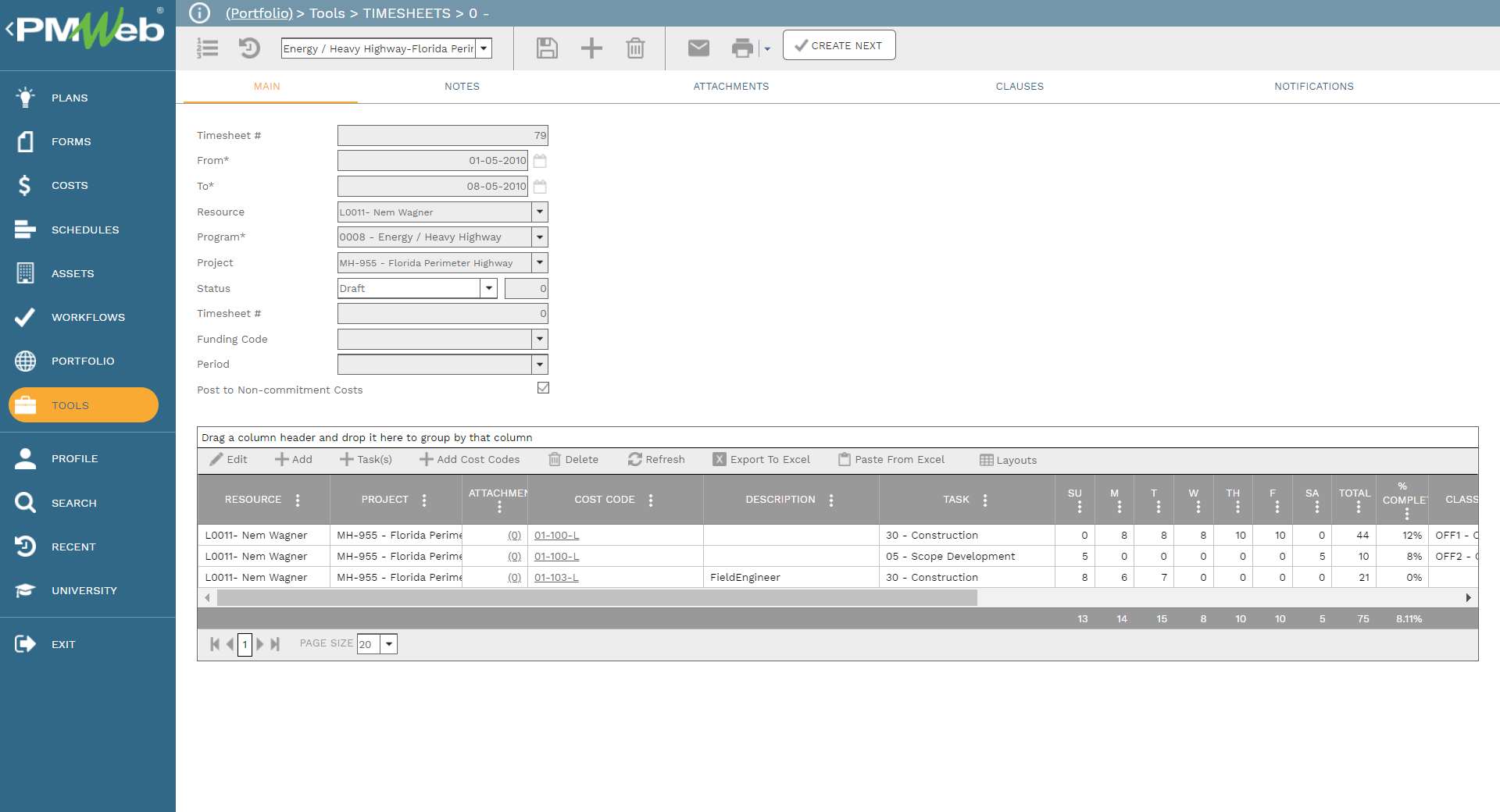
Balance to Complete Curve
PMWeb forecast module calculates the projection for the balance to complete which is the difference between the budget at completion (BAC) and actual cost (AC). This will be achieved by selecting the start and finish dates which align with the linked project schedule activity start and finish dates along with the spending projection curve. Of course, the balance to complete projection values can be manually added for each period. The balance to complete projection analysis will be performed at the end of each progress period.
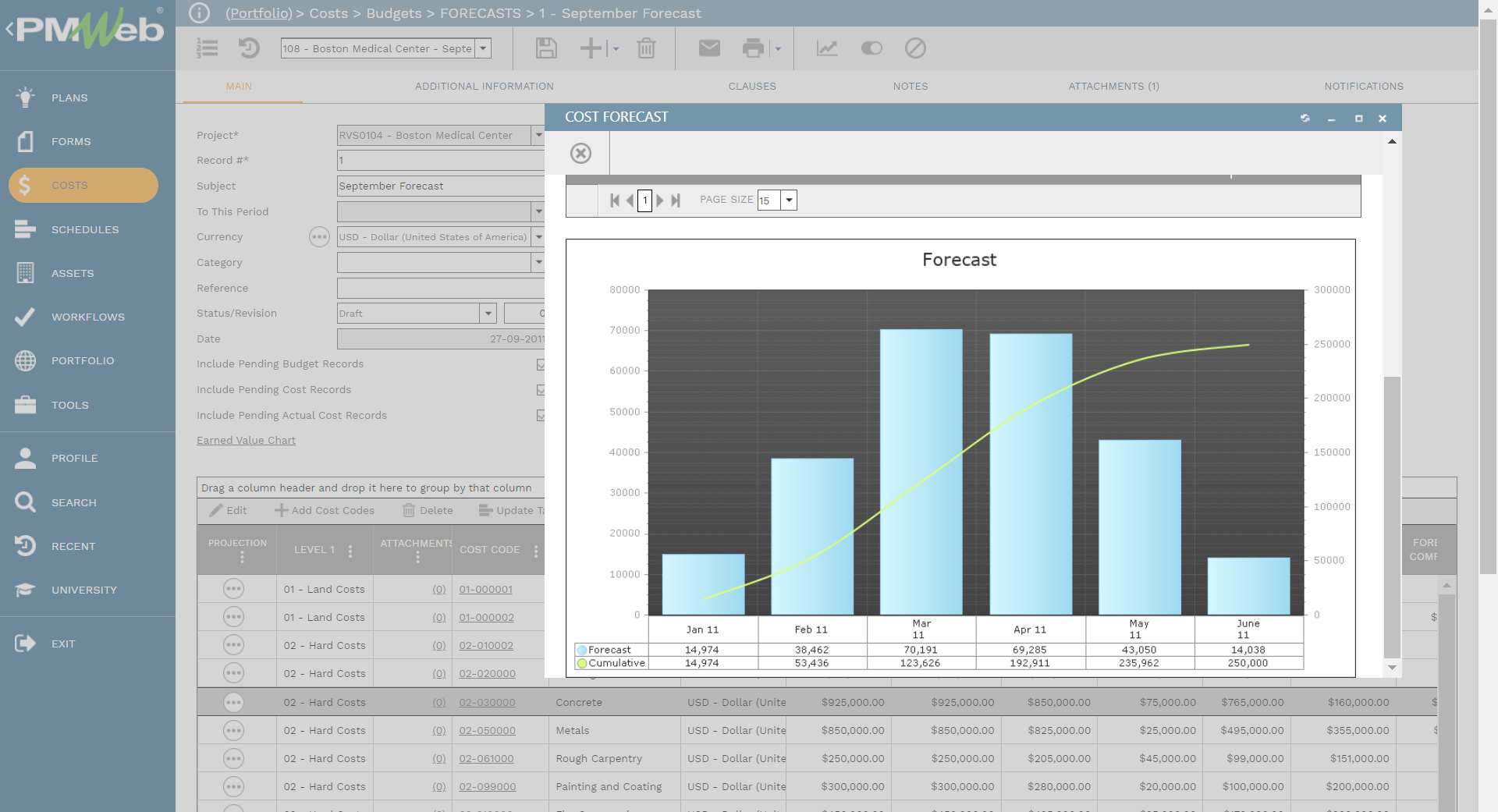
Visualizing Real-Time Status of All Project Financial Transactions
PMWeb cost worksheet module allows creating customized spreadsheets to detail the desired financial transaction values posted against each cost breakdown structure level. For example, the cost worksheet can show the original approved baseline budget, approved budget adjustments, revised project budget, awarded commitments, approved commitment change orders, revised commitments, actual approved cost against commitment contracts, actual approved cost against non-commitments, total actual cost and balance to complete. The cost worksheet could also include formulas to calculate percentages as well as values.

Presenting the Cost Curves
Accordingly, the three cost curves that capital project owners must have to monitor, evaluate and report a real-time single version of the truth of their projects’ performance and status are the planned budget spending, actual cost, and balance to complete. The PMWeb report writer creates a report to present those curves for the project duration. In addition, the report shows the variance between what was budgeted and the actual cost or earned value per period. The report also displays the schedule performance index (SPI) at the current period along with the total variance or schedule variance (SV).



